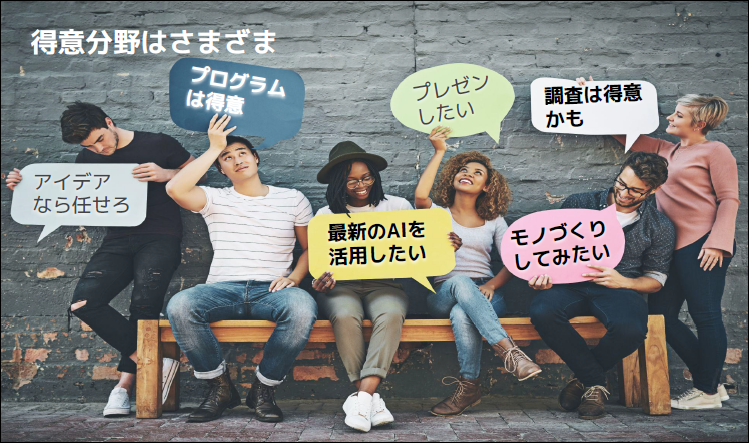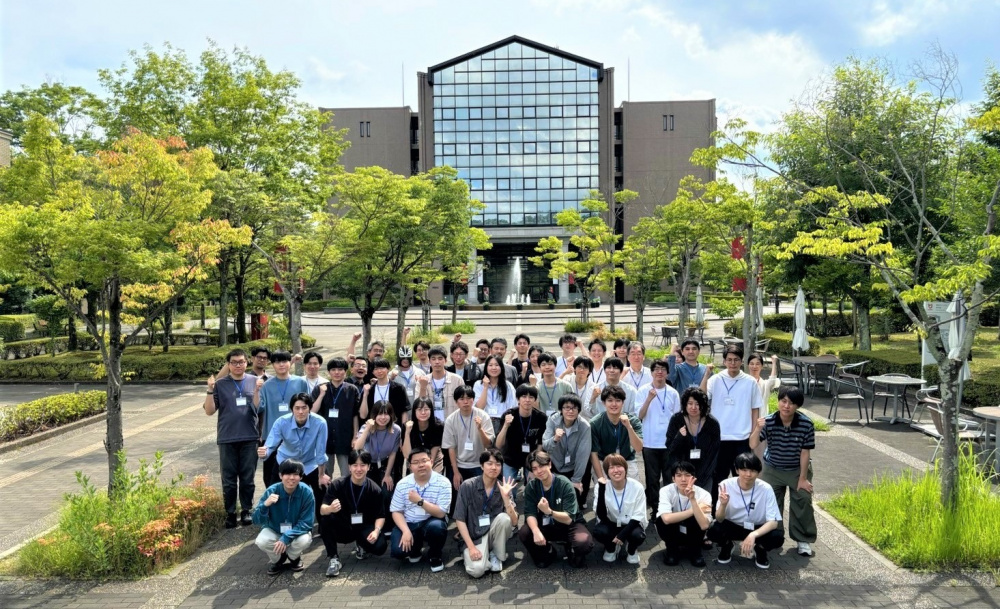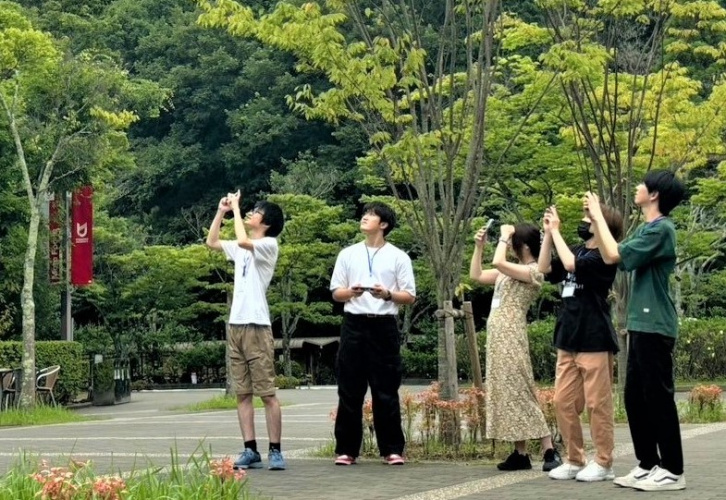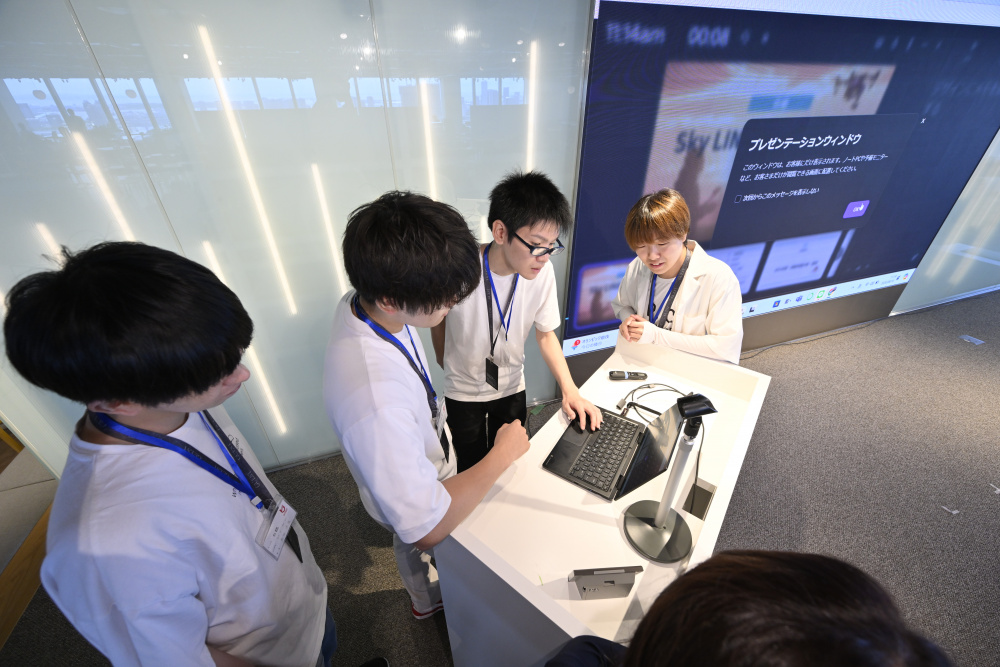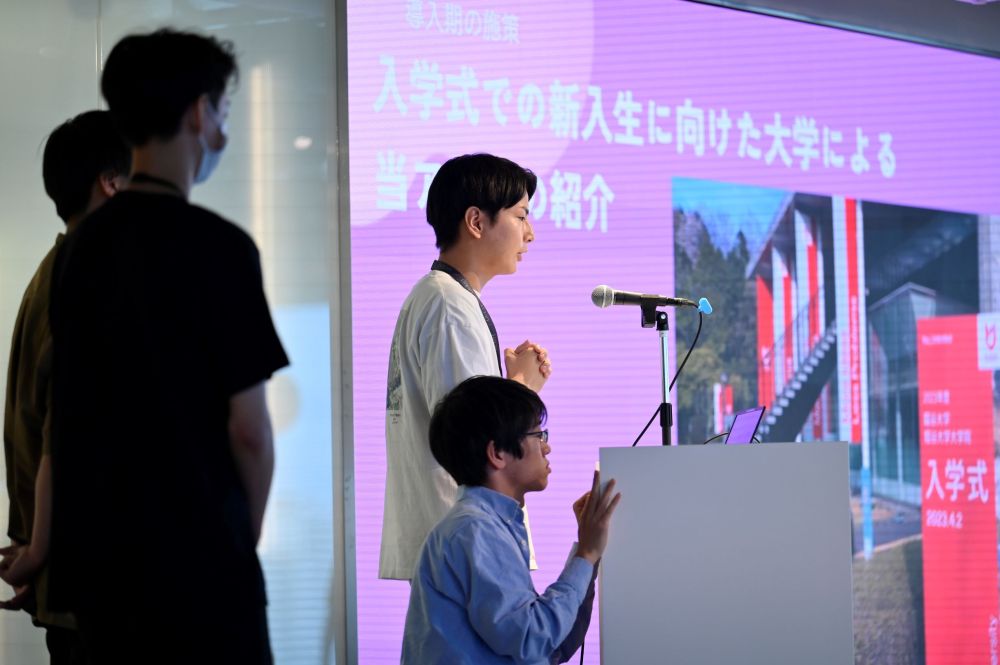Ryukoku University × SoftBank Smart Campus Hackathon 2024: Participation Report.
Posted on
Updated on
Read time
min(1132 words)
Introduction
Hello, I'm Riku-Mono. This report summarizes my experience and achievements through participating in a hackathon held at my university.
Hackathon Overview
This was a Smart Campus Hackathon co-hosted by Ryukoku University and SoftBank Corporation, held from June 2024. As part of the comprehensive collaboration agreement between Ryukoku University, SoftBank Corporation, and LINE Yahoo, students took the initiative to realize a smart campus. The overall activities were also featured in Ryukoku University's public relations and SoftBank Corporation's articles.
Theme
Smart Campus by Students Let's improve the university using students' own power by combining STEAM Commons1 manufacturing facilities with cutting-edge technologies like generative AI!
Schedule
We conducted idea generation, prototype development, and final presentations.
- STEP1 - June 15: OT & Ideathon
- STEP2 - June 29: Hackathon Day 1
- STEP3 - July 13: Hackathon Day 2 & Mid-term Presentation
- STEP4 - August 10: Final Presentation (Takeshiba Headquarters)
Team Members
The team was randomly formed from students in their third year or above from the Advanced Science and Engineering, Sociology, and Agriculture departments.
- TL / Web BE: Advanced Science and Engineering B4
- Web FE・BE: Advanced Science and Engineering B3 / @riku-mono
- Digital Signage: Advanced Science and Engineering B3
- Design: Agriculture D4
- Mentor: SoftBank Engineer
Other Details
Evaluation Criteria
Projects were evaluated on a 5-point scale across 4 perspectives and 7 criteria, with rankings determined by comprehensive evaluation from 5 judges.
- Presentation: Expressiveness
- Reality: Usefulness, Feasibility
- Challenge: Novelty, Technical Challenge
- Technology: Utilization of Manufacturing, Technology Utilization
Awards
- Presentation Award: Team with excellent presentation
- Reality Award: Team with highest evaluation in usefulness and feasibility
- Challenge Award: Team with highest evaluation in novelty and technical challenge
- Technology Award: Team with highest evaluation in manufacturing and technology utilization
- Overall Ranking 1-3: Teams with high comprehensive evaluation
Participation Report
STEP 1 - Ideathon
On the first day, we had an overview of the hackathon, team formation, and ideathon.
Our team identified "lack of interaction between students" as a campus and student issue. We aimed to solve this by providing a "platform for easier event recruitment and participation by students and organizations".
While we had different ideas and opinions that sometimes clashed, this led to incorporating each other's strengths and creating better ideas. The ideathon taught me how important it is to exchange ideas with members from different backgrounds in building the project foundation.
Project Overview at Ideathon
Idea: "Event Recruitment and Participation Platform" Features: Event recruitment and participation, communication, real-time information provision, AI recommendations Media: Web application, digital signage, LINE
STEP 2 - Hackathon Day 1
This was the first day of development. We refined the ideas from the ideathon and set up the design and development environment.
We started with the design and development of the central web application. After setting up the Docker environment, we created a rough functional and screen design. While progress was slower than expected, we compensated by working outside of scheduled hours based on role assignments.
At the end of the day, a new Plan A2 emerged to solve the platform's awareness problem through manufacturing.
Details of Plan A are described later.
STEP 3 - Hackathon Day 2
We spent the first half on development and the second half preparing and giving the mid-term presentation.
We shared our individual progress and checked the overall status to proceed with the next tasks. While one team member had completed the digital signage prototype, the web application progress was delayed, making the overall situation challenging.
We experimented with the new Plan A design at STEAM Commons.
For the mid-term presentation, we presented the campus issues, solutions, web screen transitions, and progress. The presentation time was 10 minutes, followed by 5 minutes of Q&A. Due to last-minute preparation, the presentation materials were insufficient, and time management was problematic. We ended up going significantly over time without a cohesive presentation.
STEP N - Off-schedule Work
After the mid-term presentation, as the web application development wasn't progressing, I personally advanced the development based on the design. As a reflection, we should have started development earlier and shared progress more frequently.
Then, four days before the final day, we met offline for two consecutive days to create the Plan A prototype at STEAM Commons and prepare the slides and other presentation materials.
STEP 4 - Final Presentation
At SoftBank Takeshiba Headquarters 30F Cafe Shiba, we made final adjustments to the presentation during a 2-hour final sprint before the final presentation. The presentation time was 10 minutes, followed by 5 minutes of Q&A.
Thanks to the lessons from the mid-term presentation, we had prepared well and delivered a smooth and effective presentation.
However, during the Q&A session, we received tougher questions than expected and couldn't respond well, ending with some anxiety.
And the result was...
Results
We received the Reality Award and 1st Place Overall. Our project's usefulness in problem-solving and feasibility of the plan were highly evaluated, and our thorough presentation preparation paid off.
Other Awards
- Presentation Award: Suzuka Power
- Challenge Award: Shirogumi
- Technology Award: eggplant
- Overall 3rd Place: Chappies
- Overall 2nd Place: eggplant
Reflections
While I had experience with hackathons through my organization's activities, this was my first time participating with a team of strangers.
Through this hackathon, I learned the importance of collaboration with members from different fields, progress sharing, and advance preparation. For next time, I aim to improve progress management and advance preparation, and strengthen team-wide communication.
Conclusion
Thank you for reading to the end. Below are the project details and actual presentation materials for those interested.
Project Introduction
"ruBridge" is a platform that connects Ryukoku University students and organizations through event recruitment and participation.
Features
- Event recruitment and participation
- Interest sharing
- Real-time information provision through digital signage
- Acrylic keyholder with titles
Technology Stack
The web application was developed using the following technology stack:

Manufacturing-based Problem Solving
To solve the platform's awareness problem, we created the following at STEAM Commons:
- Acrylic keyholders with title system (proposed in Plan A)
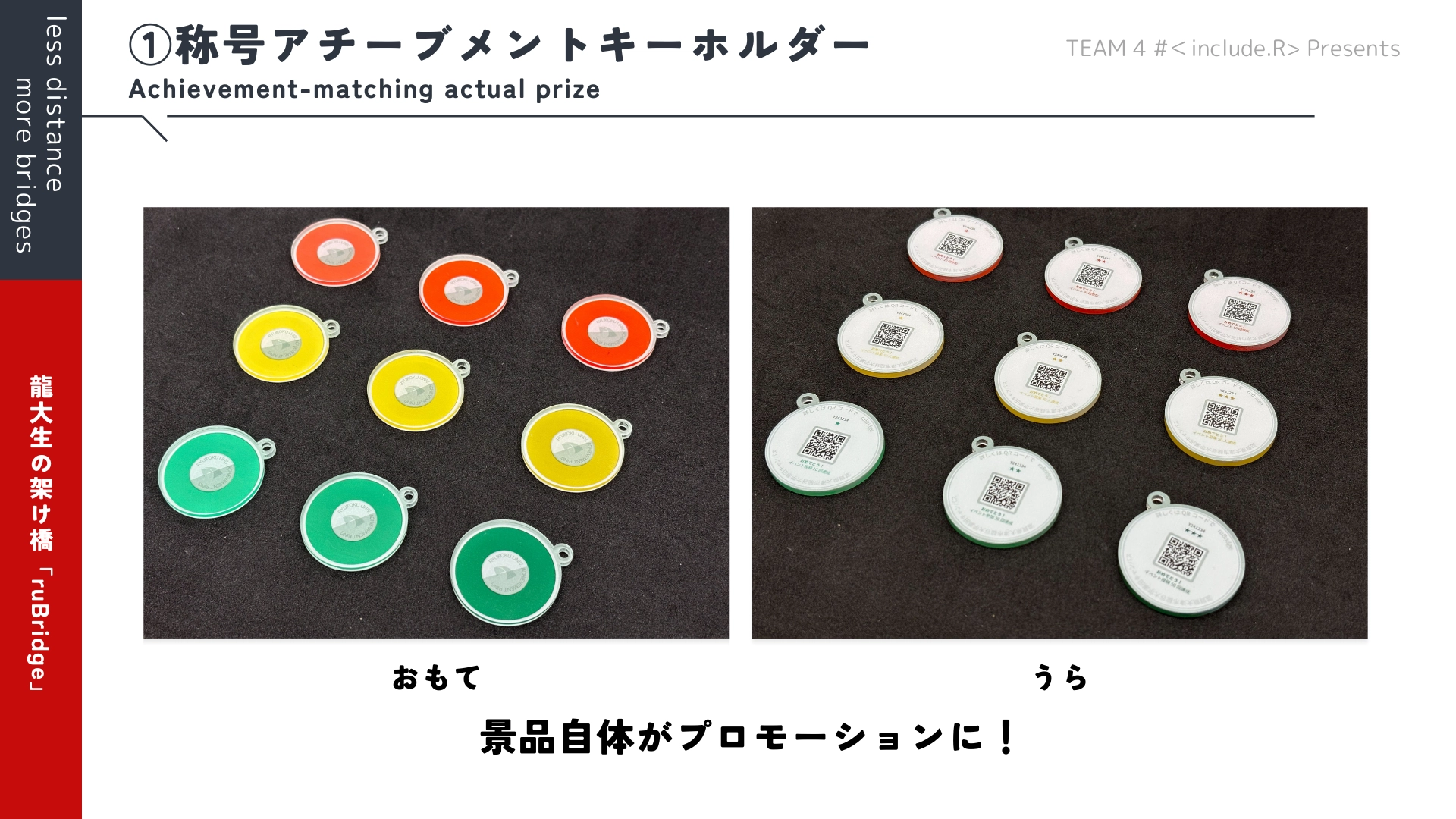
- Digital signage installation and projection
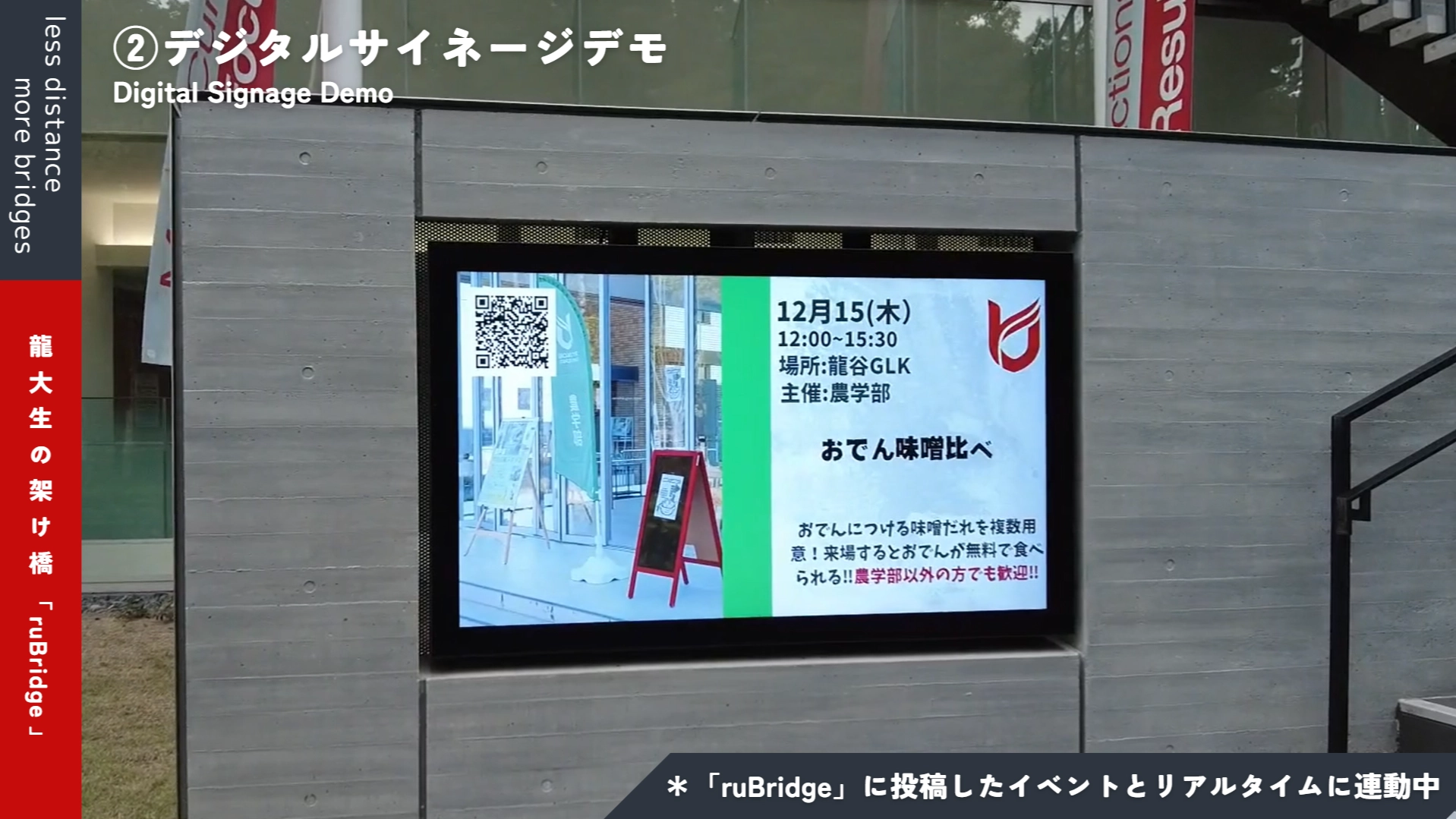
Presentation Slides
You can view the actual presentation slides, including the web app demo, through the following link:
Note: Figma Slides loading may take time depending on your connection speed.
[include.R] ruBridge - 最終発表
https://www.figma.comHackathon Related Links
Articles by Ryukoku University
Footnotes
-
STEAM Commons is a facility for "manufacturing" that Ryukoku University students can freely use. ↩
-
Plan A is a problem-solving proposal through manufacturing at STEAM Commons. Details are described in the Project Introduction. ↩

